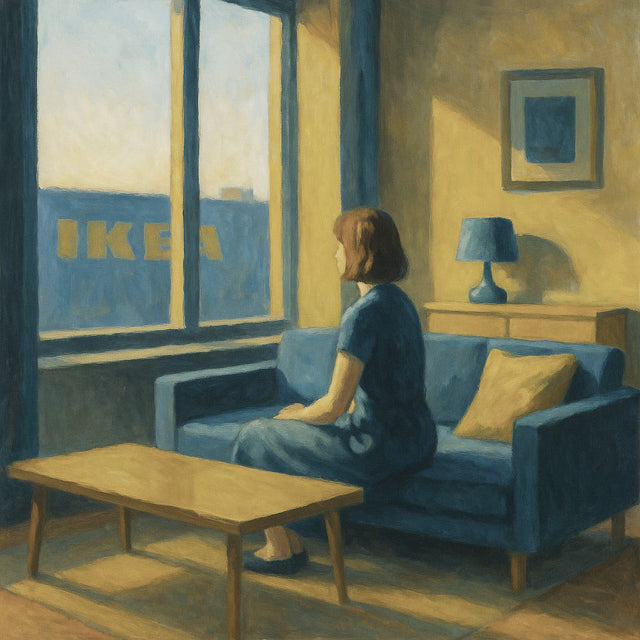Why Some Architects Love IKEA and Others Absolutely Hate It
Mention IKEA around architects and you'll immediately notice two reactions: glowing admiration or absolute disdain. IKEA isn't just a store; for many architects, it's an emotional battleground where design ideals clash with mass-market realities. Here's a lively dive into 25 reasons why architects love IKEA and 25 reasons why they can't stand it, each with real-world examples and deeper insights.
25 Reasons Architects Love IKEA
- Accessible good design — finally, decent-looking furniture for everyone without needing a high-end showroom visit.
- Modular systems that fit most spaces — making even awkward rooms functional with elegant flexibility.
- Affordable solutions for tight client budgets — allowing architects to propose complete interiors without financial stress.
- Flat-pack innovation that feels like a logistical miracle — saving on shipping costs and reducing carbon footprints.
- Scandinavian minimalism without pretension — offering clean lines that don’t scream "trying too hard."
- Real collaborations with world-class designers — bringing otherwise unaffordable design sensibility to the mass market.
- Versatile pieces that work across residential and commercial projects — a Klippan sofa fits a startup office and a first apartment.
- Perfect furniture for quick renders and visualization — instantly recognizable silhouettes save modeling time.
- Reliable availability worldwide — easy to source replacements or extra pieces across different countries.
- A testbed for students learning proportions and spatial planning — real-world furniture dimensions for early design exercises.
- Inspirational DIY hacking culture — an entire universe of creative mods that architects can respect.
- Clients feel empowered to build their own spaces — strengthening the emotional bond with the project.
- Eco-friendlier initiatives — recycling programs and sustainable material lines like KUNGSBACKA.
- Surprisingly good lighting solutions — affordable yet tasteful fixtures that don't ruin a clean aesthetic.
- Scale-friendly products for compact living — essential for dense urban projects.
- Emotional branding that creates positive client associations — IKEA = cozy modernity in many minds.
- Pieces that can be easily modified — a little paint or hardware upgrade goes a long way.
- Durable enough for starter homes and young families — items survive long enough to build memories.
- Simplified detailing that teaches restraint — design students learn not everything needs a flourish.
- Huge online catalog for mood boards — making presentations richer and faster.
- Color palettes that rarely offend architectural taste — safe whites, muted woods, earthy tones.
- Smart storage systems that solve real spatial problems — KALLAX alone has rescued many tiny studios.
- Freedom to stage speculative homes beautifully — creating aspirational atmospheres affordably.
- No-ego design — pieces serve spaces without stealing focus.
- Democratic design philosophy — good design should not be a luxury, and IKEA embodies that principle.
25 Reasons Architects Hate IKEA
- Mass production destroys craftsmanship — every piece loses the uniqueness handcraft offers.
- Pieces often "date" quickly — leading to interiors that feel obsolete after just a few years.
- Materials like particle board feel disposable — creating a culture of planned obsolescence.
- Clients expect "IKEA prices" for custom design — undervaluing bespoke architecture.
- Assembly trauma is real — and assembly errors undermine structural intent.
- Designs play it too safe — avoiding experimental forms that push design forward.
- Repetitive "IKEA look" homogenizes spaces globally — leading to loss of regional character.
- Lack of real aging — surfaces chip instead of developing patina.
- Built for 5–10 years, not generations — contrary to sustainability principles.
- Industrial standardization flattens human variability — erasing quirks that make spaces memorable.
- Shrinks cultural diversity — a Stockholm apartment looks eerily like a Tokyo condo.
- Branding overwhelms authentic architecture — "It looks like an IKEA showroom" becomes a criticism.
- Overemphasis on surface beauty vs. construction quality — pleasing at first glance, disappointing up close.
- Overuse of MDF and veneers — materials that don't survive time or moisture.
- Poor acoustic performance from hollow, light pieces — leading to echoey, harsh interiors.
- Feels like undercutting professional value — "Why pay an architect when IKEA has a solution?"
- Inconsistent fit between catalog dimensions and real-world installation — leading to frustrating surprises.
- Assembly instructions create project delays — too many lines, not enough words.
- Hard-to-repair items — one broken part means replacing the entire unit.
- Greenwashing criticisms — real efforts are sometimes overshadowed by mass production reality.
- Minimalism without depth — selling a "style" rather than a philosophy.
- Obsession with modularity suppresses organic, evolving design narratives.
- Rapid trend following dilutes authenticity — chasing styles instead of creating timeless pieces.
- Promotes throwaway culture — normalized "upgrade" cycles instead of longevity.
- IKEA becomes "default architecture" — a lazy stand-in for true spatial imagination.
Mini Stories Architects Whisper Over Coffee
One architect shared how his carefully designed Mediterranean villa ended up filled with unexpected IKEA furniture. Instead of limestone and cedar, the final photos showed SKUBB and LACK. Another architect remembered proudly setting up his first studio with secondhand IKEA pieces, feeling, for the first time, like he had truly made it into the profession.
Why It Matters More Than Furniture
The IKEA debate isn’t really about cheap boards or Allen keys. It's about the real-life choices architects make: dreams versus budgets, craft versus convenience, and individuality versus mass appeal. IKEA pushes architects to ask themselves what really matters in their work.
Final Thought
Whether you admire it, resist it, or carefully work around it, IKEA is part of the architectural landscape today. Architects need to find their own approach to what IKEA represents — in design, in culture, and in people's everyday lives. Wrestling with IKEA isn’t just about furniture; it’s about shaping a clear planning philosophy, balancing ideals with reality, and deciding what kind of architecture you want to stand for.

0 Comments
There are no comments for this article. Be the first one to leave a message!